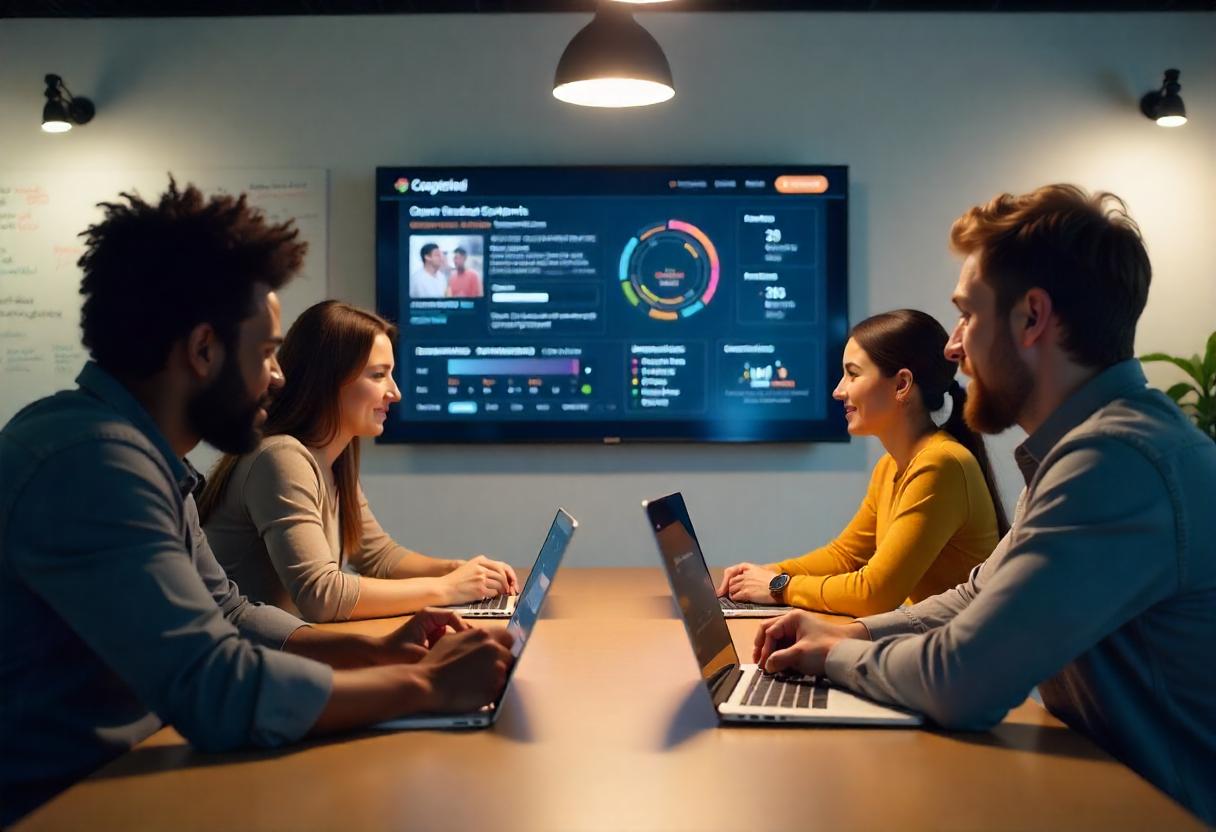Collecting and utilising player feedback is essential for game developers who want to enhance their games and improve player satisfaction. Understanding players' preferences and experiences allows developers to make informed decisions that lead to better gameplay, fewer bugs, and an overall enjoyable experience.
This guide will explore the significance of player feedback, various methods for collecting it, how to analyse the data, and ways to implement changes based on player insights.
The Importance of Player Feedback
Player feedback is a crucial element in game development that provides insights into players' experiences and preferences. It serves as a direct communication channel between developers and players, allowing developers to understand what works well and what needs adjustment.
Engaging with players not only helps refine game mechanics but also fosters a sense of community. When players see their feedback acknowledged and acted upon, it builds trust and loyalty, encouraging them to remain engaged with the game over time. Moreover, player feedback can help identify issues that may not have been apparent during development, ensuring a smoother launch and ongoing support.

Collecting Player Feedback
Effective feedback collection involves various methods that cater to different player preferences and experiences. Here are several effective strategies:
1. In-Game Surveys and Polls
In-game surveys are an excellent way to gather player opinions immediately after significant gameplay moments. These surveys should be concise—typically consisting of 3-5 questions—to encourage participation without disrupting the gaming experience.
Implementation Tips:
- Timing is Key: Trigger surveys after critical events, such as completing a level or finishing a match, when players are most likely to share their thoughts.
- Engagement: Make the surveys visually appealing and relevant to the game’s theme. For instance, using game characters or art styles can make surveys feel like part of the experience.
- Incentives: Consider offering small rewards, such as in-game currency or exclusive items, to encourage players to complete surveys. This not only increases participation rates but also makes players feel valued.
2. User Reviews and Ratings
Monitoring user reviews on platforms like Steam, the App Store, or Google Play provides invaluable insights into player sentiments. Developers should regularly check these reviews to identify common themes—both positive and negative—that can guide future updates or patches.
Best Practices:
- Regular Monitoring: Set aside time weekly or bi-weekly to read through new reviews. This helps you stay updated on player sentiments and emerging trends.
- Categorise Feedback: Create a system to categorise reviews into positive, negative, and neutral comments. This will help you identify common themes more easily.
- Responding: Engage with players by responding to their reviews—thank them for positive feedback and address concerns raised in negative reviews. This shows that you value their opinions and are committed to improving their experience.
3. Social Media Monitoring
Social media platforms are rich sources of player feedback where gamers often share their thoughts spontaneously. By actively monitoring comments, posts, and hashtags related to your title on platforms like Twitter, Facebook, Instagram, and Reddit, developers can gauge public sentiment.
Engagement Strategies:
- Create Polls: Use Twitter or Instagram Stories to create quick polls about specific features or upcoming changes. This encourages interaction while providing valuable insights.
- Join Conversations: Participate in discussions about your game on Reddit or Facebook groups dedicated to gaming. Answer questions, acknowledge suggestions, and engage with your audience.
- Content Sharing: Share updates about your game’s development process on social media and invite feedback from your followers. This transparency can lead to more constructive conversations.
4. Community Forums
Establishing a presence in community forums such as Discord servers or gaming subreddits allows players to voice their opinions in a structured environment. These forums serve as platforms for players to discuss their experiences, share suggestions, and report bugs.
Building Community:
- Create Dedicated Spaces: Set up specific channels for feedback within your Discord server or threads in subreddits where players can share their thoughts without cluttering general discussions.
- Encourage Discussions: Pose open-ended questions related to gameplay mechanics or upcoming features to spark conversations among players.
- Host AMAs (Ask Me Anything): Organise sessions where developers answer questions directly from the community. This not only provides valuable insights but also strengthens the bond between developers and players.
5. Playtesting Sessions
Conducting playtesting sessions before a game’s official launch offers direct insights into gameplay mechanics from actual players. Inviting a diverse group of testers allows developers to observe how different players interact with the game.
Effective Playtesting:
- Recruit Diverse Testers: Ensure your playtesters represent various demographics—different skill levels, ages, and gaming preferences—to gather comprehensive feedback.
- Observation is Key: During playtests, observe how players navigate through levels or features without intervening too much; this helps identify usability issues that might not be reported verbally.
- Post-Test Debriefing: After playtesting sessions, conduct debriefs where testers can share their thoughts openly about what they liked or disliked about the game.
Analysing Player Feedback
Once feedback is collected, analysing it effectively is crucial for making informed decisions:
1. Categorise Feedback
Organising feedback into categories—such as gameplay mechanics, graphics, sound design, user interface (UI), and overall experience—helps developers pinpoint specific areas requiring attention.
Analysis Techniques:
- Create Spreadsheets: Use spreadsheets or project management tools like Trello or Asana to categorise feedback systematically. This visual representation makes it easier to track issues over time.
- Highlight Trends: Look for patterns within each category; for instance, if multiple players mention that the tutorial is too long, prioritise revising it in future updates.
2. Identify Patterns
Developers should look for recurring themes in the feedback; if multiple players mention that a level is too difficult or that certain controls are unresponsive, it signals a need for change.
Pattern Recognition:
- Frequency Counts: Count how many times specific issues are mentioned across different platforms (surveys, reviews, social media) to identify which concerns are most pressing.
- Qualitative Insights: Pay attention not just to what is said but how it is said; passionate comments may indicate significant issues that require immediate attention.
3. Prioritise Issues
Not all feedback carries equal weight; prioritising issues based on their potential impact on gameplay is essential.
Prioritisation Strategies:
- Impact vs. Effort Matrix: Use an impact vs. effort matrix to classify issues by how significantly they affect player experience versus how much effort is required to address them.
- Focus on High Impact Changes First: Tackle high-impact changes that can improve overall satisfaction before addressing minor tweaks.

Using Player Feedback for Game Improvement
Effectively utilising player feedback is a critical aspect of game development that can lead to significant enhancements in gameplay, player engagement, and overall satisfaction. This section will delve into the steps developers can take to ensure that player feedback is not only collected but also analysed and implemented in a way that positively impacts the game.
1. Gather Feedback
The first step in using player feedback effectively is to create accessible channels for players to share their thoughts and experiences. This can include:
- In-Game Surveys: Implement surveys during key moments in the game, such as after completing a level or at the end of a session. These surveys should be brief and engaging, asking specific questions that help pinpoint areas for improvement.
- Social Media Engagement: Actively monitor social media platforms where players discuss your game. Encourage players to share their thoughts by creating posts that prompt feedback or by directly asking for opinions on new features or updates.
- Community Forums: Establish dedicated spaces where players can discuss their experiences, report bugs, and suggest improvements. This can be through platforms like Discord or Reddit, where players feel comfortable sharing their insights.
By providing multiple avenues for feedback, developers can gather a diverse range of opinions and suggestions that reflect the broader player base.
2. Analyse and Prioritise Feedback
Once feedback is collected, the next step is to analyse it thoroughly. This involves:
- Categorising Feedback: Organise feedback into categories such as gameplay mechanics, graphics, sound design, and user interface. This helps developers identify which areas require the most attention.
- Identifying Patterns: Look for recurring themes in the feedback. For example, if multiple players mention that a particular level is too difficult or that controls are unresponsive, this indicates a need for immediate action.
- Prioritising Issues: Not all feedback carries equal weight. Use an impact vs. effort matrix to prioritise issues based on their significance to player experience and the resources required to address them. Focus on high-impact changes first—those that will significantly enhance overall satisfaction.
3. Take Action
After analysing and prioritising feedback, developers can begin making necessary changes. This may involve:
- Adjusting Game Mechanics: If players consistently express frustration with certain gameplay elements, consider redesigning these mechanics to improve flow and enjoyment. For instance, if players find combat too challenging, adjustments could be made to enemy behavior or player abilities.
- Enhancing Visuals: If feedback indicates that graphics are outdated or unappealing, investing time in visual improvements can enhance immersion and attract new players.
- Improving User Interfaces: A common area of concern is user interface design. If players struggle to navigate menus or access features easily, revising the UI layout based on player suggestions can lead to a more intuitive experience.
- Implementing New Features: Players often have great ideas for new features that could enhance gameplay. If suggestions align with your vision for the game, consider developing these features as part of future updates.
4. Communicate Changes
Once changes are made based on player feedback, it’s essential to communicate these updates back to the community effectively:
- Patch Notes: Publish detailed patch notes outlining what changes were made based on player suggestions. This transparency builds trust and shows players that their input is valued.
- Social Media Announcements: Use social media platforms to announce major updates or improvements directly related to player feedback. Engaging with your audience through these channels keeps them informed and involved in the development process.
- Developer Blogs: Consider writing blog posts that discuss how player feedback has shaped recent updates or changes. This not only informs players but also fosters a deeper connection between developers and the community.
5. Monitor Post-Implementation Feedback
After implementing changes based on player feedback, continuous monitoring of reactions is crucial:
- Follow-Up Surveys: Conduct follow-up surveys after major updates to assess how players feel about the changes made. This helps gauge whether adjustments have had the desired impact on gameplay experience.
- Engagement Metrics: Analyse engagement metrics such as retention rates, active user counts, and session lengths before and after updates to understand how changes have affected player behavior.
- Community Discussions: Keep an eye on community forums and social media discussions following updates. Engaging with players during this time allows developers to gather immediate reactions and address any new concerns that may arise.
Incorporating player feedback into game development is a transformative process that goes beyond mere adjustments; it establishes a dynamic relationship between developers and players. By actively seeking out feedback, analysing it with care, prioritising changes based on player impact, and communicating transparently about updates, developers can create a gaming experience that is not only enjoyable but also deeply resonant with their audience.
This iterative cycle of improvement fosters a culture of collaboration and trust, where players feel empowered to contribute to the evolution of the game.
At The Game Marketer, we recognise the vital role player feedback plays in developing successful games. As a specialised game marketing agency, we assist developers and producers in navigating the complexities of game promotion through services like influencer partnerships, public relations, social media strategies, and targeted advertising. Our mission is to empower developers to effectively connect with their audiences and maximise their games' potential in the global market. Let’s work together to transform your vision into a captivating gaming experience that resonates with players worldwide!



